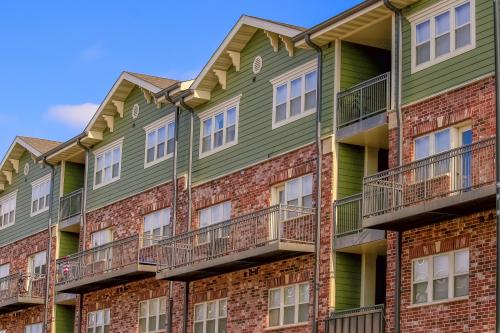This analysis is part of the American Rescue Plan: Strategies for Local Leaders series, a feature of the COVID-19 Metro Recovery Watch.
The COVID-19 pandemic has exacerbated housing insecurity for millions of low- and moderate-income renters. The most recent Census Bureau survey estimates that roughly 7 million renters have fallen behind on rent, with debts averaging $5,400 per household.
In addition to general financial support such as stimulus checks and expanded unemployment insurance, the federal government has employed two primary strategies to help stabilize renters. In September 2020, the Centers for Disease Control and Prevention (CDC) ordered a temporary nationwide moratorium on evictions, to reduce the public health risks of forcing people to move during the pandemic. (The Biden administration has extended the moratorium to June 30, although legal challenges have created uncertainty about how much longer it will last.) The federal government has also allocated an unprecedented amount of funding that state and local governments can use for emergency rent relief programs. December 2020’s COVID-19 relief bill included $25 billion in rent relief, and March’s American Rescue Plan Act offered an additional $22 billion.
As these programs have unfolded over the past year, we have learned several lessons about how their design and implementation influence their effectiveness.
Programs must be intentional and transparent about who can receive relief—and how scarce funds will be rationed
Like all U.S. housing subsidies, there isn’t enough COVID-19 rent relief money to help everyone in need. Federal rules provide some broad guidelines for who is eligible to receive rental assistance, but state and local policymakers also have some flexibility. Some programs have chosen to prioritize very poor renters (households earning less than 50% of area median income), while others have limited aid to those who are not receiving other forms of assistance (including unemployment insurance benefits).
Having a clear definition of the target population allows state and local policymakers to design an effective outreach and communication strategy. Working with local nonprofits who have ties to specific communities may be more effective at reaching marginalized groups. For example, the state of Wisconsin is partnering with United Migrant Opportunity Services to reach migrant workers. Understanding language barriers, social media usage, and technology access are other critical elements. If the assistance will be paid directly to property owners, then outreach to local landlords’ associations may increase participation and speed up the process.
Regardless of how eligibility guidelines are defined, there will be more renters in need of help than there are funds to go around. Allocating funds on a first-come, first-served basis creates disadvantages for renters with weaker information networks—often the most vulnerable households. Several programs, including in Boston, Chicago, and Houston, have used lotteries to allocate funds; this mechanism has the advantages of being transparent and providing policymakers with more information on unmet demand.
Don’t create unnecessary hurdles for renters, landlords, or staff
Complex, multilayered eligibility requirements and paperwork-heavy application processes are the enemy of effective rent relief programs. Online application systems create additional burdens for low-income households, many of whom do not have reliable internet access. Renters who work in informal labor markets (including gig economy jobs) may have difficulty obtaining documentation of lost income. Low-income renters who live in informal housing arrangements—such as renting a room without a lease in someone’s private home, or doubling-up with family and friends as unofficial subletters—were largely excluded from the first rounds of federal assistance because they required landlords’ cooperation.
Complex application processes also put higher demands on state and local governments who administer rent relief programs (or their nonprofit partners), who then need to devote more staff resources to verifying eligibility. Local governments with very limited capacity should design the simplest possible programs to make administration manageable.
Keep long-run goals in mind: Healthier rental markets and a comprehensive safety net
The CDC’s eviction moratorium and federal rent relief were never designed to be permanent; they were emergency measures intended to bridge communities until the public health crisis was under control and the labor market rebounded. As vaccination rates rise and employment picks up, local governments should align their short-term investments with policies that can improve the long-run health of their local housing markets: ensuring an adequate supply of decent-quality rental housing and providing low-income households with long-term rental assistance.
Too many cities and counties use zoning to prohibit the development of multifamily rental housing on the majority of their land, leading to chronic undersupply and artificially high rent levels. Even as the pandemic has highlighted renters’ financial insecurity, city and state governments are dragging their heels on necessary reforms. Elected leaders need to recognize that protecting affluent homeowners’ “neighborhood character” comes at the direct expense of renters, who face restricted choices and higher housing costs.
The other half of the equation is for the federal government to guarantee universal rental assistance for low-income households. During the 2020 campaign, then-candidate Joe Biden expressed support for making housing vouchers an entitlement, rather than subject to annual budget appropriations from Congress—a policy position already in place in peer countries such as Germany and France. It’s time for the Biden administration to make good on that promise.
The Brookings Institution is committed to quality, independence, and impact.
We are supported by a diverse array of funders. In line with our values and policies, each Brookings publication represents the sole views of its author(s).








Commentary
Well-designed rent relief programs can lay the groundwork for healthier post-pandemic housing markets
May 14, 2021